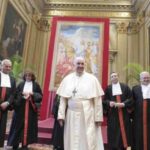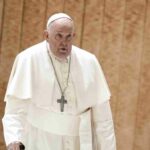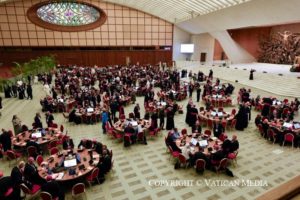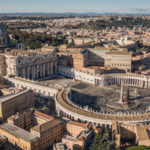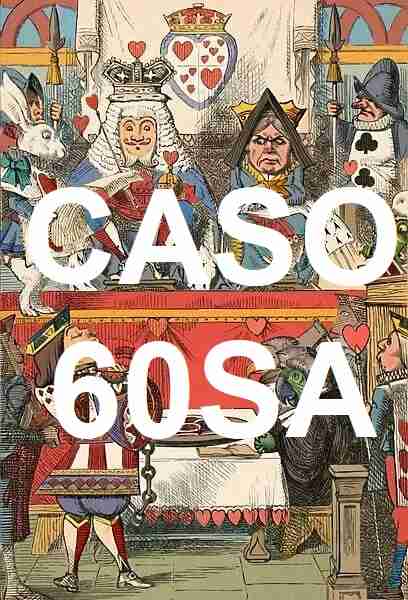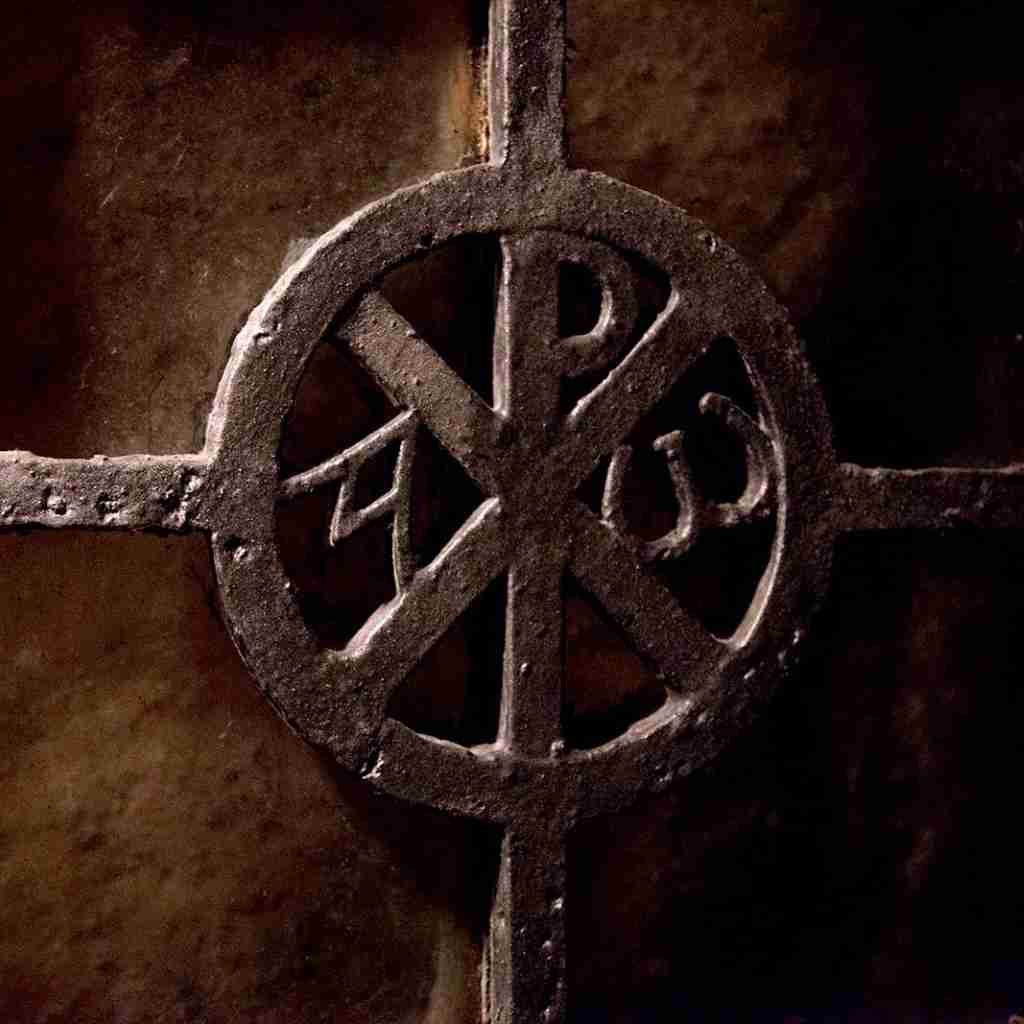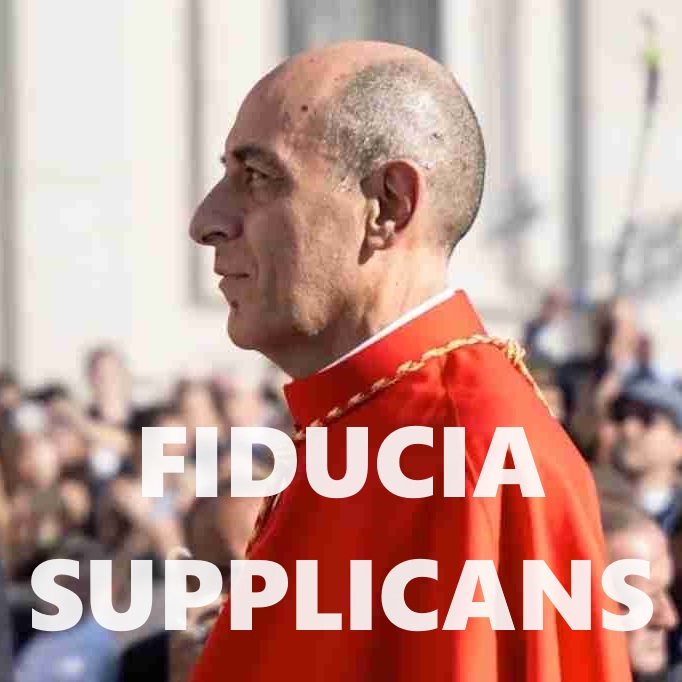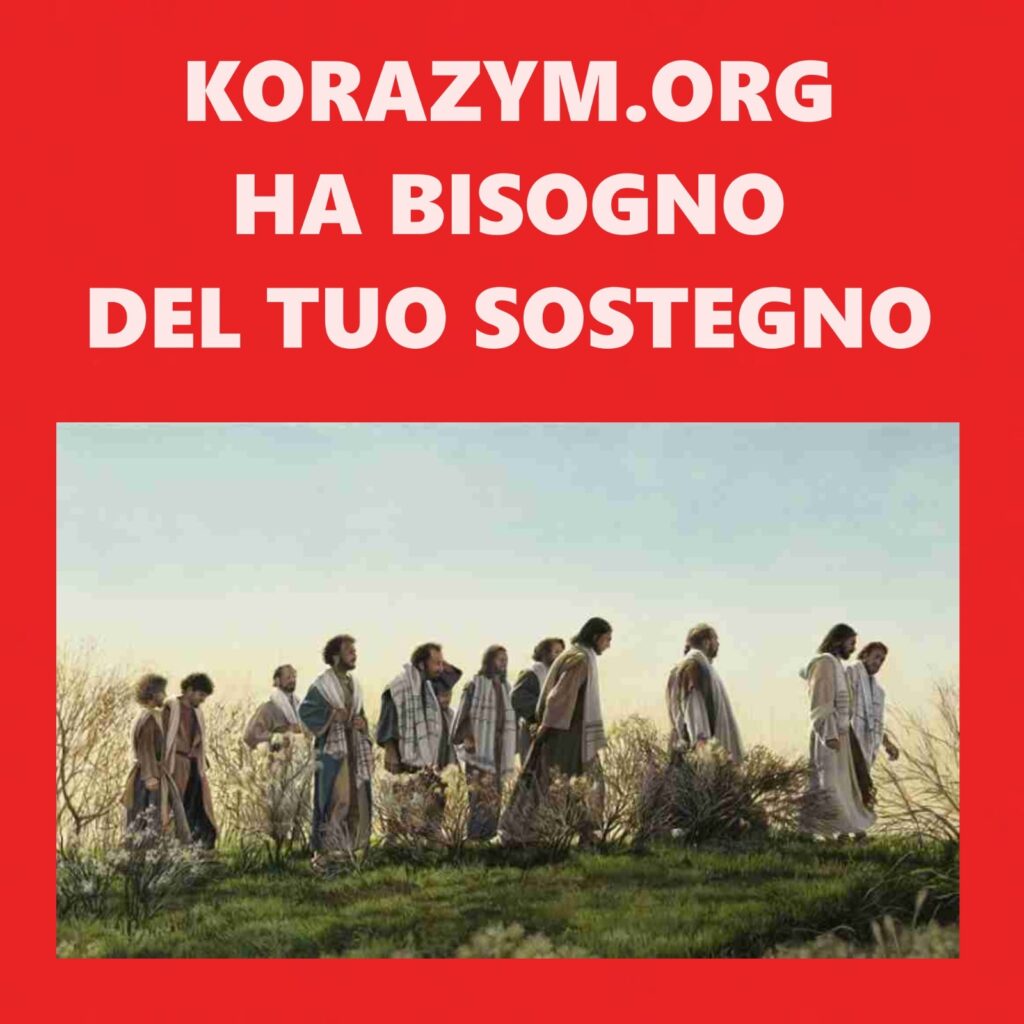Uno sguardo oltre il “book-gate”, puntando la lente sul problema vero: la mancanza di pensiero istituzionale
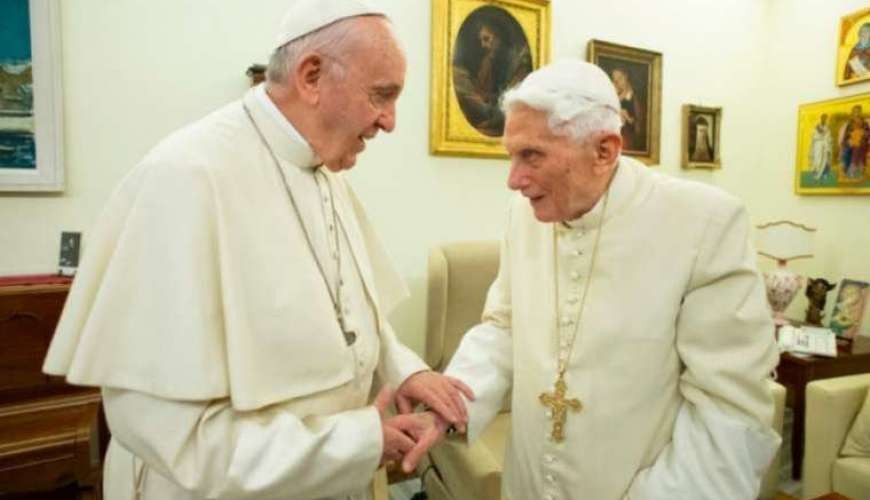
Come contributo per la metacognizione, nel dibattito provocato dalla pubblicazione del libro “Dal profondo dei nostri cuori” di Benedetto XVI e Cardinale Robert Sarah, offro la traduzione italiana (di lavoro) – seguita dalla versione originale in inglese – dell’analisi di Andrea Gagliarducci nel suo column “Un osservatore vaticano” su CNA.
Benedetto XVI – Il libro di Sarah: e se il vero problema fosse la mancanza di pensiero istituzionale?
di Andrea Gagliarducci
Catholic News Agency/Column “A Vatican Observer”, 16 gennaio 2020
[Traduzione italiana (di lavoro)]
La bozza della riforma della Curia, Praedicate Evangelium, non menziona nemmeno l’Ufficio del papa emerito. È come se la rinuncia di Benedetto XVI nel 2013 fosse unica nella storia: una cosa unica e mai più. Le recenti fortissime polemiche che circondano non solo la persona, ma la posizione del papa emerito, hanno chiarito che stabilire qualcosa come un “ufficio” di papa emerito potrebbe essere cruciale, eviterebbe la confusione, darebbe anche più libertà al papa regnante.
La questione del papa emerito è precipitata alla ribalta della discussione pubblica a causa del libro sul celibato sacerdotale del Cardinale Robert Sarah, Prefetto della Congregazione per il culto divino e la disciplina dei sacramenti. Il libro ha anche un contributo di Benedetto XVI.
La pubblicazione di un testo di Benedetto XVI sul celibato in vista della pubblicazione dell’esortazione post-sinodale di Papa Francesco, in seguito all’Assemblea Speciale del Sinodo dei Vescovi per l’Amazzonia, è stata letta come una dichiarazione contro Papa Francesco, che si dice essere disposti a consentire l’ordinazione degli uomini sposati al sacerdozio. Gli attacchi hanno preso di mira il Cardinale Sarah perché presumibilmente ha usato il testo di Benedetto XVI in un modo diverso da quello concordato col Papa emerito.
Il Cardinale Sarah si difese. Ha pubblicato la corrispondenza che ha avuto con Benedetto XVI prima della pubblicazione. Le lettere mostrano che Benedetto XVI era a conoscenza del libro e concordava con la pubblicazione del suo testo. L’entourage di Benedetto XVI chiese comunque di cambiare la copertina del libro, in modo che il Papa emerito apparisse nelle successive edizioni come un contributore, non come coautore.
Ignatius Press, l’editore del libro in inglese, ha dichiarato che prenderà in considerazione qualsiasi richiesta di modifica della copertina e di altre attribuzioni, ma non ha ricevuto alcuna indicazione ufficiale. Secondo i loro criteri, il libro è scritto dal Cardinale Sarah e Benedetto XVI.
Possiamo solo chiederci quali telefonate e conversazioni ci siano state tra piazza Pia, sede del Dicastero della Comunicazione della Santa Sede; il Monastero Mater Ecclesiae, dove abita Benedetto XVI; e Casa Santa Marta, dove vive Papa Francesco.
In ogni caso, la strategia di comunicazione della Santa Sede appariva mirata a sbarazzarsi di ogni possibile contrapposizione tra “i due Papi” e, allo stesso tempo, a salvaguardare l’opera di Benedetto XVI. Era un ago particolarmente complicato da infilare.
Benedetto XVI si sente libero di scrivere e pubblicare per due motivi:
La prima ragione è che si comporta da Papa emerito. Non si sente legato all’Ufficio petrino, quindi è tornato al suo antico io, come Professor Ratzinger. NB. Non il Cardinale Ratzinger. Professor Ratzinger.
Come mero teologo accademico, l’uomo che divenne Benedetto XVI, era solito pensare alle questioni. È prevedibile che il ritorno di molti dei temi del dibattito teologico degli anni ’70 lo abbia portato a scrivere, riflettere, partecipare alla discussione di questi attualmente in corso.
La corrispondenza con il Cardinale Sarah rivela che Benedetto XVI aveva già iniziato a scrivere una riflessione sul tema del celibato sacerdotale. Benedetto XVI ha ritenuto che l’opera non fosse perfetta, ma l’ha comunque consegnata al Cardinale Sarah e ha approvato la pubblicazione.
Ciò significa che Benedetto XVI è attento alle discussioni all’interno della Chiesa e dimostra che è ancora al lavoro su alcune questioni. Si sente libero perché non è interessato ad agire come un magistero parallelo. Studia semplicemente argomenti e discute le proprie posizioni.
La seconda ragione è che Papa Francesco ha dato a Benedetto XVI il permesso di essere attivo nella vita pubblica. In una delle sue prime interviste, rilasciata al quotidiano italiano Il Corriere della Sera, Papa Francesco ha sottolineato: “ Il Papa emerito non è una statua in un museo. È una istituzione. Non eravamo abituati. Sessanta o settant’anni fa, il vescovo emerito non esisteva. Venne dopo il Concilio. Oggi è un’istituzione. La stessa cosa deve accadere per il Papa emerito. Benedetto è il primo e forse ce ne saranno altri. Non lo sappiamo. Lui è discreto, umile, non vuole disturbare. Ne abbiamo parlato e abbiamo deciso insieme che sarebbe stato meglio che vedesse gente, uscisse e partecipasse alla vita della Chiesa”.
Vi fu un ampio dibattito sull’attività di Benedetto XVI nell’arena pubblica e fu persino richiesto che il silenzio del Papa emerito fosse regolato o imposto istituzionalmente. Non è successo. Benedetto XVI, nel frattempo, si sente molto libero di scrivere, pensare e discutere; perché ha il permesso di Papa Francesco. Come ogni cattolico, Benedetto XVI dà totale obbedienza al Papa.
La vera questione riguarda l’Ufficio del papa emerito stesso. La rinuncia di Benedetto XVI all’Ufficio papale ha aperto un nuovo mondo. Non era mai successo nella storia moderna. Alla fine, Benedetto XVI decise che il suo titolo sarebbe stato quello di Papa emerito e che avrebbe indossato l’abito bianco. Non sarebbe stato più un cardinale; non divenne un semplice prete o un altro vescovo “in pensione”.
Il teologo Padre Giovanni Cavalcoli ha osservato che, con questa decisione, Benedetto XVI ha interpretato il ministero petrino come un’ordinazione episcopale. Quando un vescovo si ritira, non perde il suo status episcopale. Si ritira dal suo ufficio. Benedetto XVI fu il primo a non identificare il Papato con l’Ufficio del pontefice.
Benedetto XVI ha aperto una nuova strada e ha lasciato al suo successore il compito di regolarla.
Ci si aspettava che Papa Francesco emettesse un Motu proprio o qualche altro documento giuridico per fornire una cornice legale all’Ufficio del papa emerito. Il Motu proprio avrebbe potuto chiarire quale sarebbe stato il peso delle parole del Papa emerito e quali fossero le responsabilità del Papa emerito all’interno della Chiesa.
Mai nei sette anni del suo pontificato, Papa Francesco non l’ha fatto. Né le discussioni sulla riforma della Curia hanno toccato la questione. C’è, alla fine, una lacuna istituzionale – persino un vuoto – che è probabilmente il problema principale nel Pontificato di Francesco.
Eletto con mandato di riforma, Papa Francesco ha preso le sue decisioni personalmente e solo in seguito a volte ha dato loro un quadro istituzionale. L’esempio più recente è la nomina di Francesca De Giovanni a Sottosegretario alla Segreteria di Stato per le relazioni multilaterali.
Questa è una nuova posizione all’interno del Segretariato di Stato. Il nuovo Sottosegretario viene aggiunto al Sottosegretario per le relazioni con gli Stati. Questa nuova posizione è prevista nel progetto di legge sulla riforma della Curia. Tuttavia, il progetto non è stato ancora approvato. Papa Francesco ha fatto la nomina senza attendere la riforma. L’Ufficio è stato istituito.
Per quanto riguarda il Papa emerito, Papa Francesco ha preso la sua presenza per scontata, ed era del parere che non vi era alcuna necessità di regolare l’Ufficio. Tuttavia, un quadro istituzionale aiuta a prevenire incomprensioni.
Benedetto XVI non parla da Papa; non sta cercando di insegnare un magistero diverso da quello di Papa Francesco. Ma ogni volta che parla, è considerato come un Papa regnante.
L’Arcivescovo Agostino Marchetto, Presidente emerito del Pontificio Consiglio per i Migranti, ha sottolineato che se le persone smettessero di considerare le parole di Benedetto XVI come quelle di un Papa, tutto potrebbe essere sistemato. È difficile non essere d’accordo con lui.
Alla fine, si dubita che la confusione sia intenzionale. L’opinione di William Kilpatrick su questo, in un articolo scritto per Catholic World Report e pubblicato il 6 dicembre 2019, è interessante.
Kilpatrick ha osservato che recenti scandali e dibattiti (dalla questione Pachamama del Sinodo amazzonico alla rivelazione sulla copertura degli abusi) hanno creato confusione tra i cattolici. Ha poi sottolineato che “alcune persone pensano che la confusione sia intenzionale: la versione vaticana della strategia di Cloward-Piven. Ideata dai sociologi Richard Cloward e Francis Fox Piven, formati dalla Columbia University, una squadra marito-moglie dedicata all’attivismo politico, la strategia sosteneva un sovraccarico strategico e organizzato del sistema di welfare pubblico. Questo, come hanno scritto in un famoso articolo del 1966 su The Nation, creerebbe ‘crisi politica… che potrebbe portare a una legislazione per un reddito annuo garantito e quindi la fine della povertà’”.
Alla fine, ha detto Kilpatrick, “il trucco è sopraffare il sistema con ripetute richieste nella speranza che la confusione che ne deriverà fornirà le condizioni per attuare cambiamenti radicali”.
In un certo senso, poiché manca un quadro istituzionale per il Papa emerito, coloro che vogliono aumentare la confusione e raggiungere i propri obiettivi possono utilizzare questa strategia.
Finora pochissime persone hanno parlato di ciò che Benedetto XVI e il Cardinale Sarah hanno scritto nel loro libro. Il dibattito finora si è concentrato quasi interamente sul fatto che i due hanno scritto la loro riflessione e che la riflessione che hanno scritto potrebbe essere letta in contrasto con Papa Francesco. Quindi, era meglio che Benedetto XVI tacesse e che il Cardinale Sarah si dimettesse.
Se questo sistema fosse applicato, non ci sarebbe spazio per la libertà di parola nella Chiesa e piccole lobby sarebbero in grado di esercitare una pressione senza precedenti. Questi sono i rischi quando l’obiettivo è quello di aprire i processi senza alcuna regolamentazione iniziale. Alla fine, la questione di Benedetto XVI – il libro di Sarah implica un problema diverso, che comporta la riforma della Chiesa intrapresa da Papa Francesco: la questione istituzionale.
Papa Francesco ha sempre affermato di voler una conversione dei cuori. La conversione dei cuori deve essere inquadrata in un’organizzazione, tuttavia, ponendo l’istituzione al primo posto. La Chiesa è durata 2000 anni in parte perché l’istituzione ha sempre preceduto i singoli uomini di Chiesa e alla fine aveva la meglio sulle preoccupazioni per le loro circostanze personali.
Un’istituzione forte, alla fine, avrebbe potuto facilmente assorbire il “book-gate”.
Alla fine, i personaggi principali della storia sono: un Papa emerito quasi deriso perché presumibilmente manipolato; un cardinale preso di mira come antipapa; un Papa descritto come ignaro delle manovre dietro la schiena. Nel frattempo, un contributo teologico di due uomini di Chiesa molto anziani è stato momentaneamente oscurato e non si è discusso su ciò che il libro dice in realtà.
Benedict XVI – Sarah’s book: What if the real issue is the lack of institutional thinking?
by Andrea Gagliarducci
Catholic News Agency/Column “A Vatican Observer”, 16 January 2020
The draft of the Curia reform, Praedicate Evangelium, does not even mention the office of the Pope emeritus. It is as if Benedict XVI’s 2013 renunciation were unique in history: a “one-off” and never to happen again. Recent high-stakes polemics surrounding not only the person, but the position of the Pope emeritus, have made it clear that establishing something like an “office” of Pope emeritus could be critical. It would prevent confusion. It would even give more freedom to the reigning Pope.
The issue of the Pope emeritus came crashing into the fore of public discussion because of the book on priestly celibacy by Cardinal Robert Sarah, prefect of the Congregation for the Divine Worship and the Discipline of Sacraments. The book also has a contribution by Benedict XVI.
The publication of a text by Benedict XVI on celibacy just ahead of the release of the post-Synodal exhortation from Pope Francis, following the special assembly of the synod of bishops for the Amazon, was read as a statement against Pope Francis, who is said to be willing allow the ordination of married men to the priesthood. The attacks targeted Cardinal Sarah because he allegedly used Benedict XVI’s text in a way different than what agreed with Pope emeritus.
Cardinal Sarah defended himself. He published the correspondence he had with Benedict XVI before the publication. The letters show that Benedict XVI was aware of the book and agreed with publishing his text. Benedict XVI’s entourage asked anyway to change the book’s cover, so that the Pope emeritus would appear in subsequent editions as a contributor, not as co-author.
Ignatius Press, the publisher of the book in English, has said it will consider any request to change the cover and other attributions, but has not received any official indication. According to their criteria, the book is co-authored by Cardinal Sarah and Benedict XVI.
We can only wonder what phone calls and conversations there have been between piazza Pia, headquarters of the Vatican Dicastery of Communication; the monastery Mater Ecclesiae, where Benedict XVI lives; and Casa Santa Marta, where Pope Francis lives.
In any case, the Vatican’s communication strategy appeared aimed at getting rid of any possible contraposition between “the two Popes” and, at the same time safeguarding Benedict XVI’s work. It was a particularly tricky needle to thread.
Benedict XVI feels free to write and publish for two reasons:
The first reason is that he actually acts as Pope emeritus. He does not feel bound to the Petrine office, so he has reverted to his former self, asProfessor Ratzinger. NB. Not Cardinal Ratzinger. Professor Ratzinger.
As a mere academic theologian, the man who became Benedict XVI used to think about issues. It is foreseeable that the return of many of the themes of the theological debate of the 1970s led him to write, reflect, participate in the discussion of them currently underway.
The correspondence with Cardinal Sarah reveals that Benedict XVI had already begun to write a reflection on the theme of the priestly celibacy. Benedict XVI felt that the work was not perfect, but he anyway gave it to Cardinal Sarah and approved the publication.
This means that Benedict XVI is attentive to discussion within the Church, and shows that he is still at work on some issues. He feels free because he is not interested in acting as a parallel magisterium. He merely studies arguments and argues out his own positions.
The second reason is that Pope Francis gave Benedict XVI permission to be active in public life. In one of his first interviews, given to the Italian newspaper Il Corriere della Sera, Pope Francis stressed: “The Pope emeritus is not a statue in a museum. It is an institution. We weren’t used to it. 60 or 70 years ago, ‘bishop emeritus’ didn’t exist. It came after the (Second Vatican) Council. Today, it is an institution. The same thing must happen for the Pope emeritus. Benedict is the first, and perhaps there will be others. We don’t know. He is discreet, humble, and he doesn’t want to disturb. We have spoken about it, and we decided together that it would be better that he see people, get out, and participate in the life of the Church”.
There was extensive debate about the activity of Benedict XVI in the public arena, and it was even requested that the silence of the Pope emeritus be regulated or imposed institutionally. That didn’t happen. Benedict XVI, meanwhile, feels himself very much free to write, to think, and to discuss; because, he has Pope Francis’s permission. As every Catholic, Benedict XVI gives total obedience to the Pope.
The real issue regards the office of the Pope emeritus itself. Benedict XVI’s renunciation of the papal office opened a new world. It had never happened in modern history. In the end, Benedict XVI decided that his title was going to be that of Pope emeritus and that he was going to wear the white cassock. He was not going to be a Cardinal again; he did not become a simple priest or even another “retired” bishop.
Theologian Fr. Giovanni Cavalcoli noted that, with this decision, Benedict XVI interpreted the Petrine ministry as an episcopal ordination. When a bishop retires, he does not lose his episcopal status. He retires from his office. Benedict XVI was the first who did not identify the Papacy with the office of the pontifex.
Benedict XVI opened a new way and left to his successor the task of regulating it.
Pope Francis was expected to issue a motu proprio or some other juridical document to provide a legal frame to the office of the Pope emeritus. The motu proprio might have clarified what the weight of Pope emeritus words would be, and which were the Pope emeritus’ responsibilities within the Church.
Never in the seven years of his pontificate, has Pope Francis done that. Nor have the Curia reform discussions touched the issue. There is, in the end, an institutional lacuna — even a vacuum — which is likely the main problem in Francis’ pontificate.
Elected with a mandate for reform, Pope Francis has made his decisions personally, and only later, sometimes given them an institutional framework. The latest example is the appointment of Francesca De Giovanni as Secretariat of State’s undersecretary for the multilateral relations.
This is a new position within the Secretariat of State. The new undersecretary is added to the undersecretary for the relations with the States. This new position is foreseen in the draft law reforming the Curia. However, the draft has not been approved yet. Pope Francis made the appointment without waiting for the reform. The office has been established.
As far as concerns the Pope emeritus, Pope Francis took his presence for granted, and trusted that there was no need to regulate the office. However, an institutional framework helps to prevent from misunderstandings.
Benedict XVI does not speak as a Pope; he is not looking to teach a magisterium other than Pope Francis’ one. But anytime he speaks, he is considered like a reigning Pope.
Archbishop Agostino Marchetto, president emeritus of the Pontifical Council for Migrants, underscored that if people quit considering Benedict XVI’s words as those of a Pope, everything would be fixed. It is hard to disagree with him.
In the end, one doubts that the confusion is intentional. William Kilpatrick’s argument on that, in an article penned for Catholic World Report and published on Dec. 6, 2019, is interesting.
Kilpatrick noted that recent scandals and debates (from the Amazonian Synod’s Pachamama issue to the revelation on abuse cover-up) generated confusion among Catholics. He then stressed that “some people think the confusion is deliberate—the Vatican version of the Cloward-Piven Strategy. Devised by Columbia University-trained sociologists Richard Cloward and Francis Fox Piven—a husband-wife team dedicated to political activism—the strategy advocated strategic, organized overloading of the public welfare system. This would, as they wrote in a famous 1966 article in The Nation, create ‘ political crisis … that could lead to legislation for a guaranteed annual income and thus an end to poverty’”.
In the end, Kilpatrick said, “the trick is to overwhelm the system with repeated demands in the hope that the resulting confusion will provide the conditions for implementing radical changes”.
In a certain sense, since there is a lack of an institutional framework for the Pope emeritus, those who want to raise confusion and get to their goals can use this strategy.
So far, very few people have spoken of what Benedict XVI and Cardinal Sarah wrote in their book. The debate so far has focused almost entirely on the fact that the two wrote their reflection and that the reflection they wrote could be read in contrast with Pope Francis. So, it was better that Benedict XVI stay silent, and Cardinal Sarah resign.
If this system were applied, there would be no space for free speech in the Church, and small lobbies would be able to exercise an unprecedented pressure. These are the risks when the goal is to open processes without any initial regulation.In the end, the issue of Benedict XVI – Sarah’s book implies a different problem, which involves the Church reform Pope Francis undertook: the institutional issue.
Pope Francis has always said he wants a conversion of hearts. The conversion of hearts must be framed into an organization, however, setting the institution in the first place. The Church lasted 2,000 years in part because the institution has always come before individual churchmen and ultimately won out over concerns for their personal circumstances.
A strong institution, in the end, could have easily absorbed “book-gate”.
In the end, the main characters of the story are: a Pope emeritus almost mocked because he was allegedly manipulated; a cardinal targeted as an anti-Pope; a Pope described as unaware of the maneuvers behind his back. In the meantime, a theological contribution by two very senior churchmen was momentarily overshadowed, and there was no discussion on what the book actually says.
Fonte.
Foto di Vatican Media, 21 dicembre 2018.


